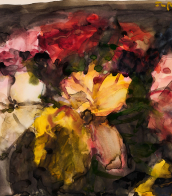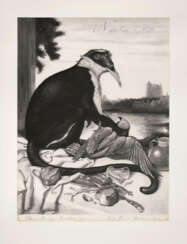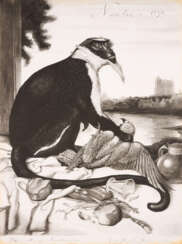уолтон форд (1960)
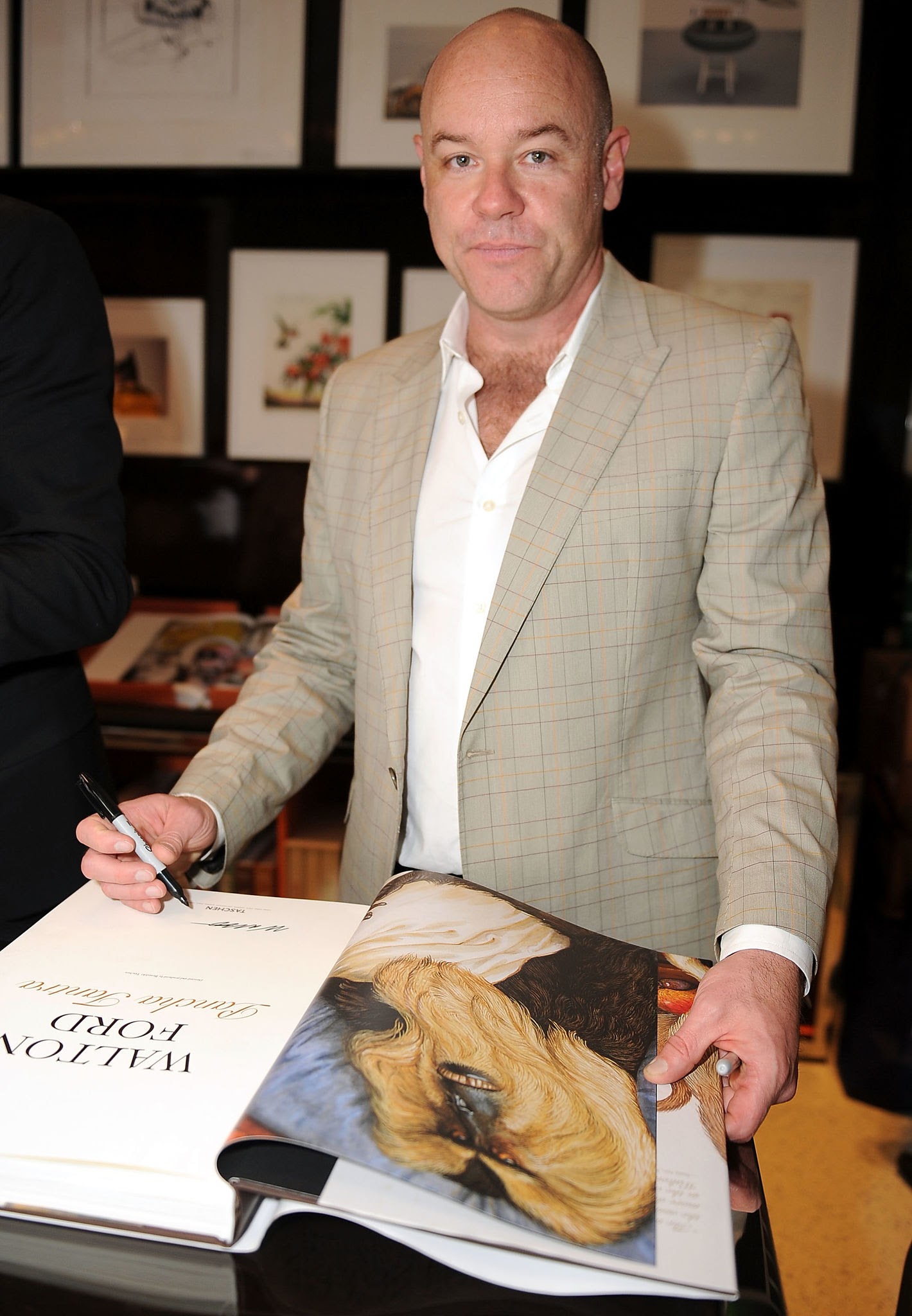
Walton Ford is an American artist. He is known for his large-scale, highly detailed paintings that depict natural history subjects and explore the relationships between humans and animals.
Ford studied at the Rhode Island School of Design and later from Yale University. His work is inspired by the tradition of natural history painting, but he subverts this tradition by using his paintings to critique colonialism, environmental degradation, and the ways in which humans have interacted with the natural world.
Ford's paintings are highly detailed and often include multiple narratives within a single image. He uses a combination of watercolor, gouache, and ink to create his large-scale works, which can be several feet in height and width. His paintings are also highly stylized, featuring elements of graphic design and pop culture.
Ford has exhibited his work extensively, including at the Whitney Museum of American Art in New York, the Hamburger Bahnhof Museum in Berlin, and the Musée de la Chasse et de la Nature in Paris. His work is also held in the collections of several major museums, including the Museum of Modern Art in New York and the Smithsonian American Art Museum in Washington, D.C.
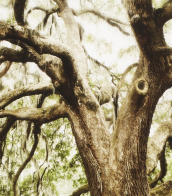

Walton Ford is an American artist. He is known for his large-scale, highly detailed paintings that depict natural history subjects and explore the relationships between humans and animals.
Ford studied at the Rhode Island School of Design and later from Yale University. His work is inspired by the tradition of natural history painting, but he subverts this tradition by using his paintings to critique colonialism, environmental degradation, and the ways in which humans have interacted with the natural world.
Ford's paintings are highly detailed and often include multiple narratives within a single image. He uses a combination of watercolor, gouache, and ink to create his large-scale works, which can be several feet in height and width. His paintings are also highly stylized, featuring elements of graphic design and pop culture.
Ford has exhibited his work extensively, including at the Whitney Museum of American Art in New York, the Hamburger Bahnhof Museum in Berlin, and the Musée de la Chasse et de la Nature in Paris. His work is also held in the collections of several major museums, including the Museum of Modern Art in New York and the Smithsonian American Art Museum in Washington, D.C.
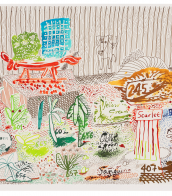

Walton Ford is an American artist. He is known for his large-scale, highly detailed paintings that depict natural history subjects and explore the relationships between humans and animals.
Ford studied at the Rhode Island School of Design and later from Yale University. His work is inspired by the tradition of natural history painting, but he subverts this tradition by using his paintings to critique colonialism, environmental degradation, and the ways in which humans have interacted with the natural world.
Ford's paintings are highly detailed and often include multiple narratives within a single image. He uses a combination of watercolor, gouache, and ink to create his large-scale works, which can be several feet in height and width. His paintings are also highly stylized, featuring elements of graphic design and pop culture.
Ford has exhibited his work extensively, including at the Whitney Museum of American Art in New York, the Hamburger Bahnhof Museum in Berlin, and the Musée de la Chasse et de la Nature in Paris. His work is also held in the collections of several major museums, including the Museum of Modern Art in New York and the Smithsonian American Art Museum in Washington, D.C.
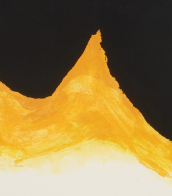

Walton Ford is an American artist. He is known for his large-scale, highly detailed paintings that depict natural history subjects and explore the relationships between humans and animals.
Ford studied at the Rhode Island School of Design and later from Yale University. His work is inspired by the tradition of natural history painting, but he subverts this tradition by using his paintings to critique colonialism, environmental degradation, and the ways in which humans have interacted with the natural world.
Ford's paintings are highly detailed and often include multiple narratives within a single image. He uses a combination of watercolor, gouache, and ink to create his large-scale works, which can be several feet in height and width. His paintings are also highly stylized, featuring elements of graphic design and pop culture.
Ford has exhibited his work extensively, including at the Whitney Museum of American Art in New York, the Hamburger Bahnhof Museum in Berlin, and the Musée de la Chasse et de la Nature in Paris. His work is also held in the collections of several major museums, including the Museum of Modern Art in New York and the Smithsonian American Art Museum in Washington, D.C.
